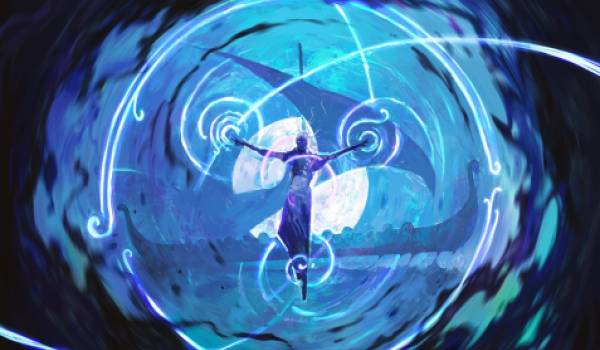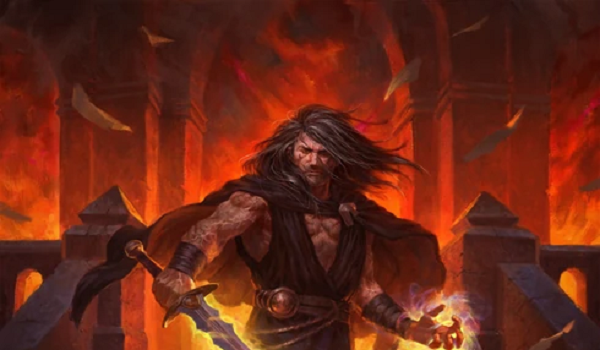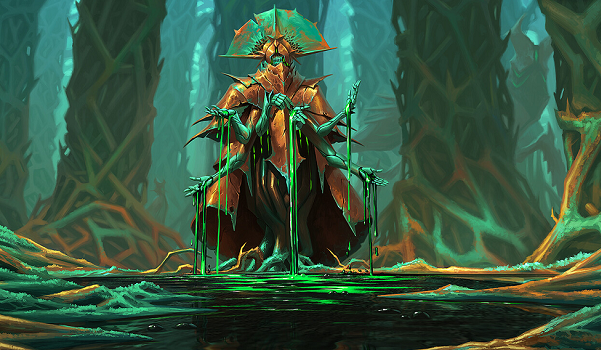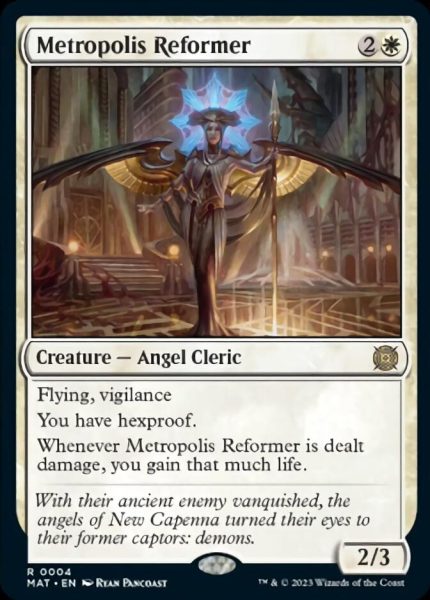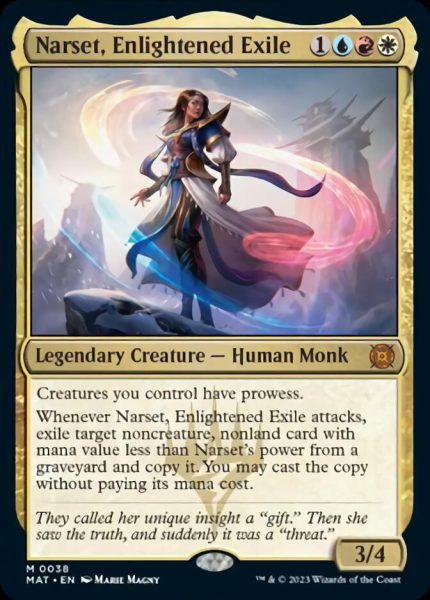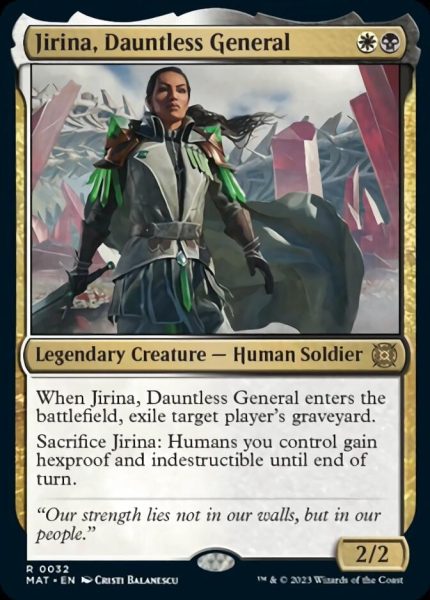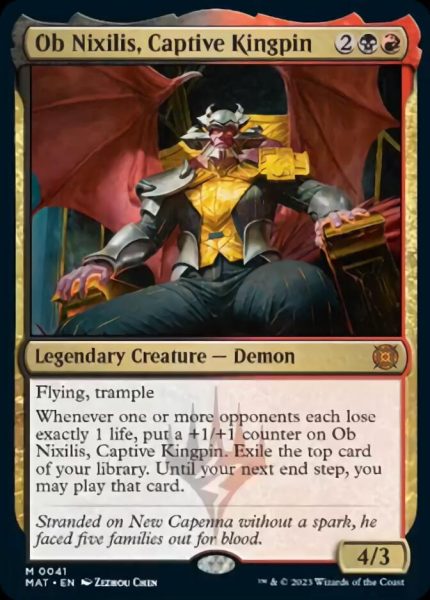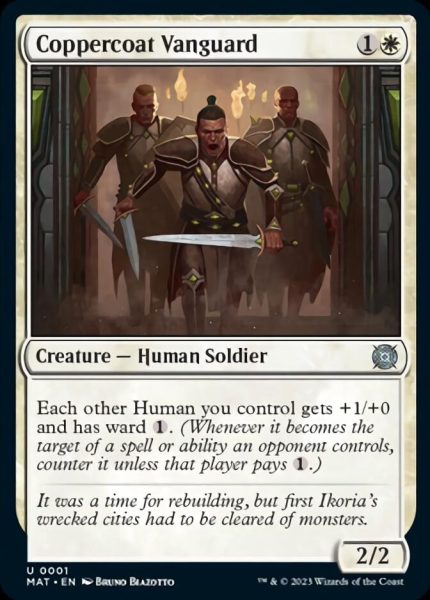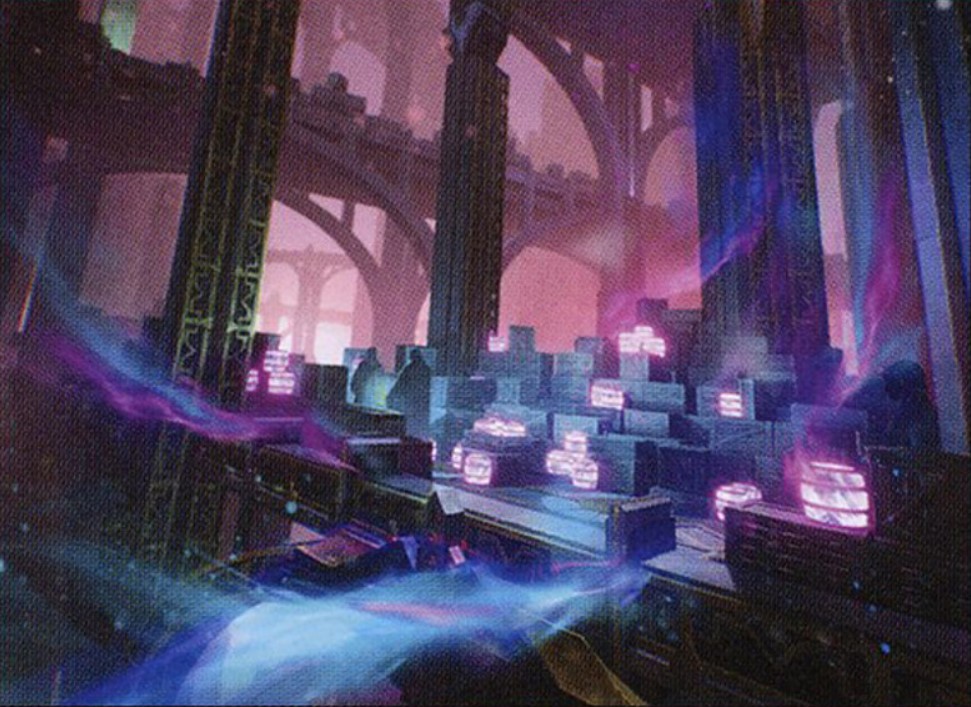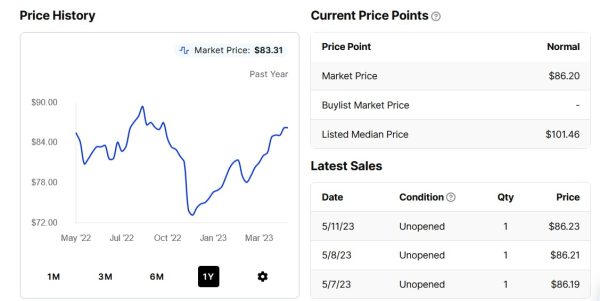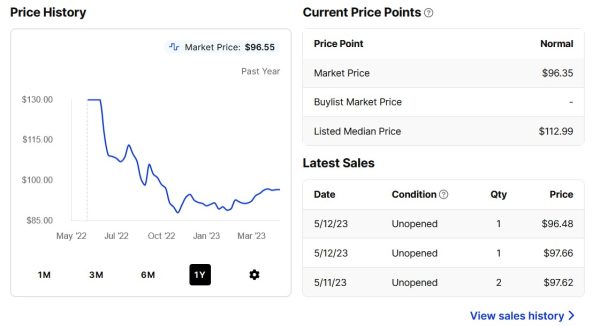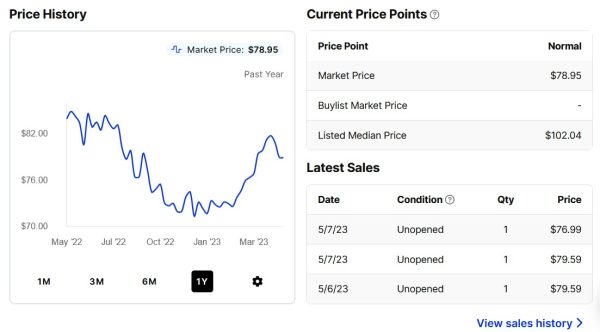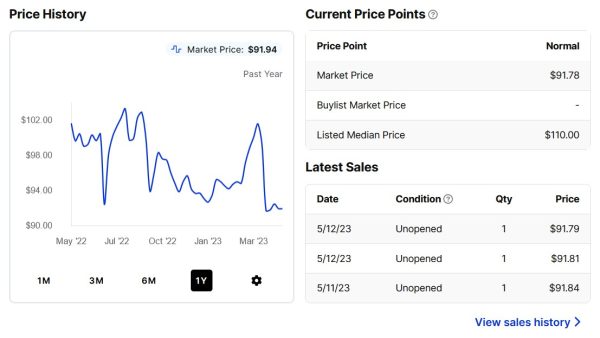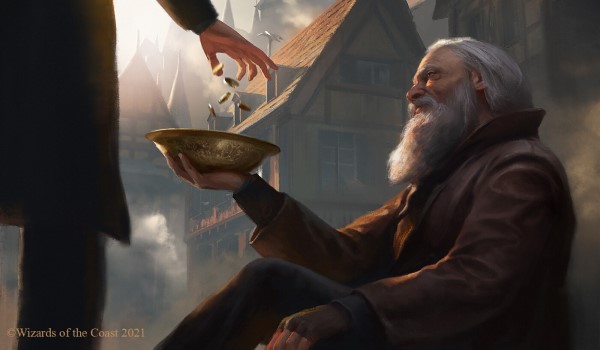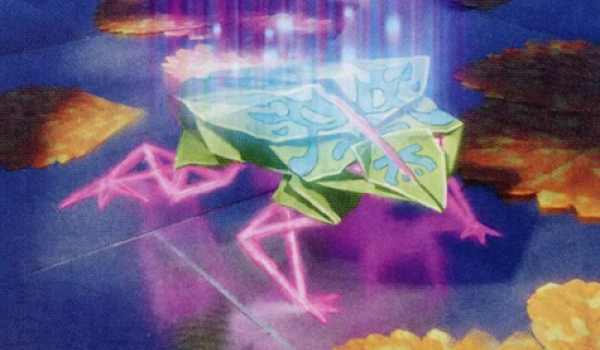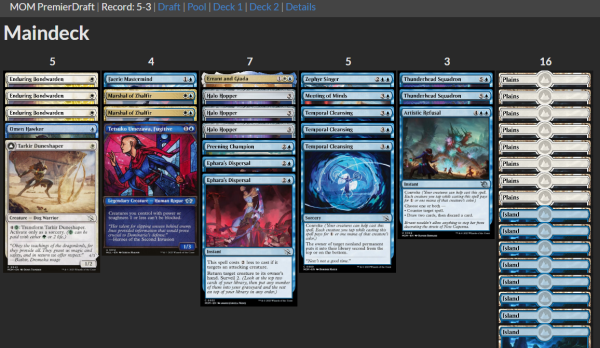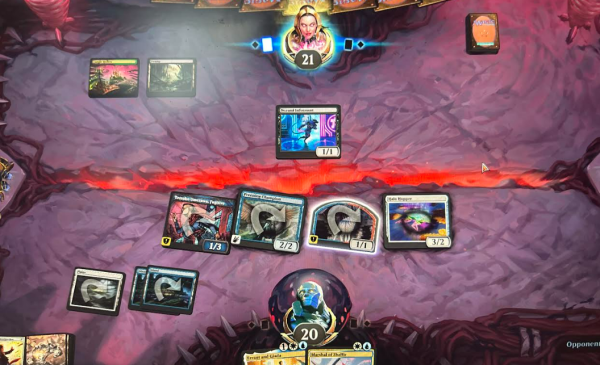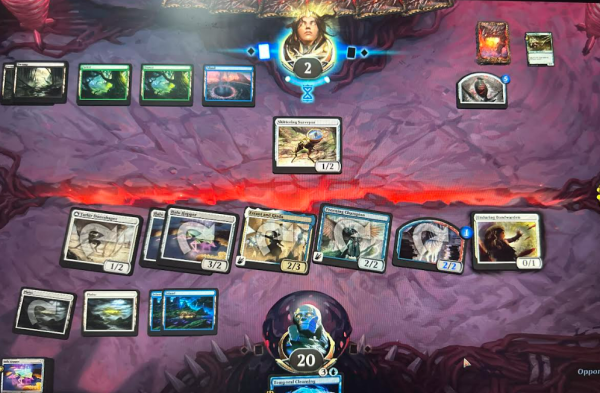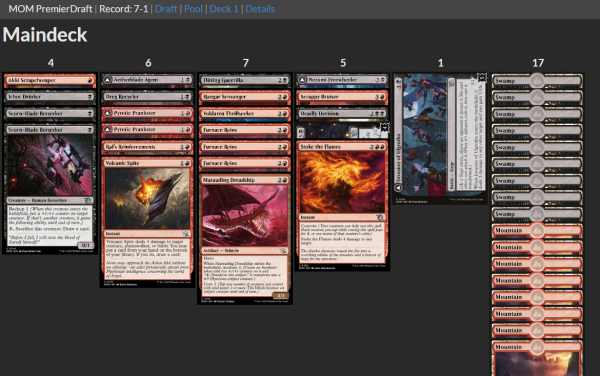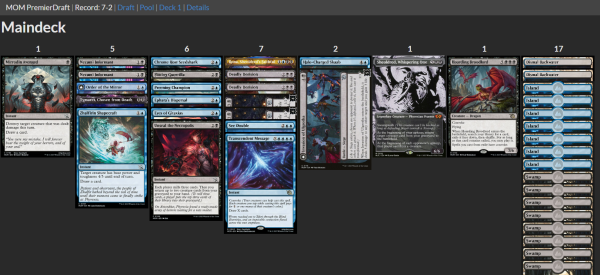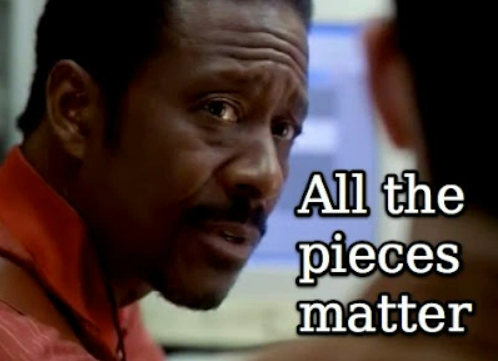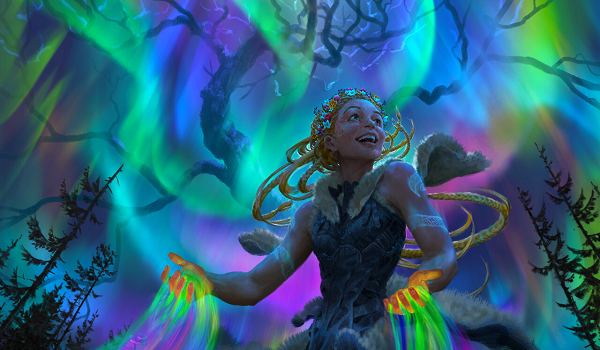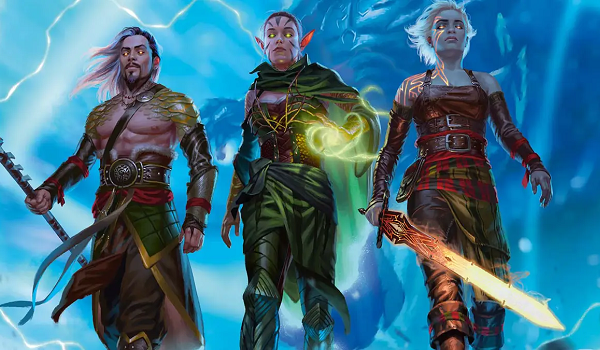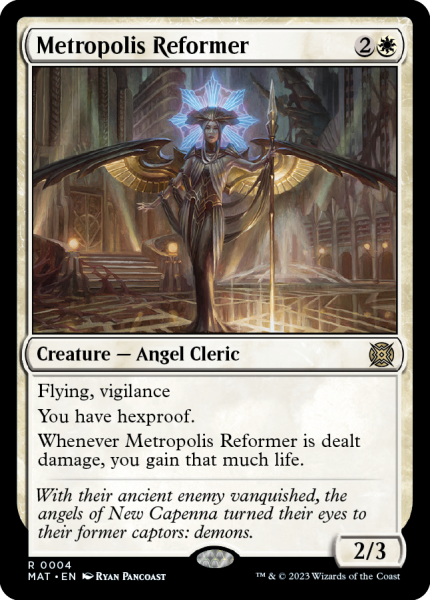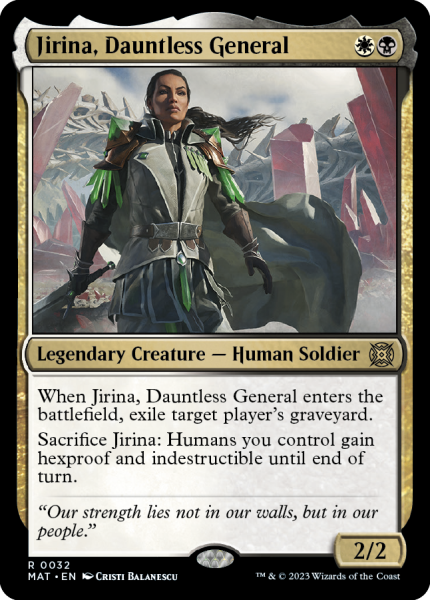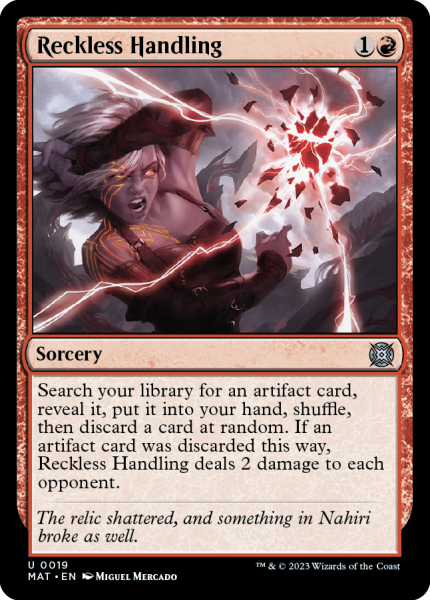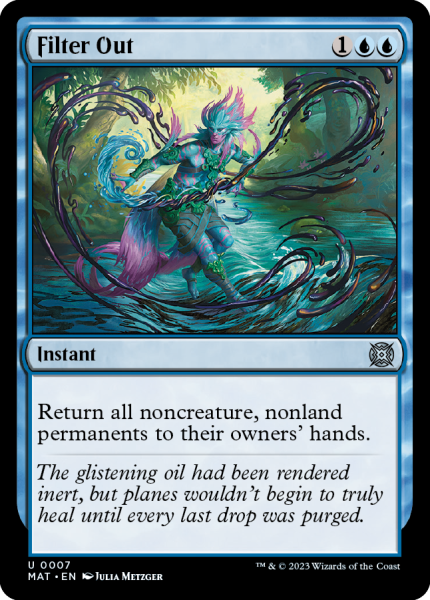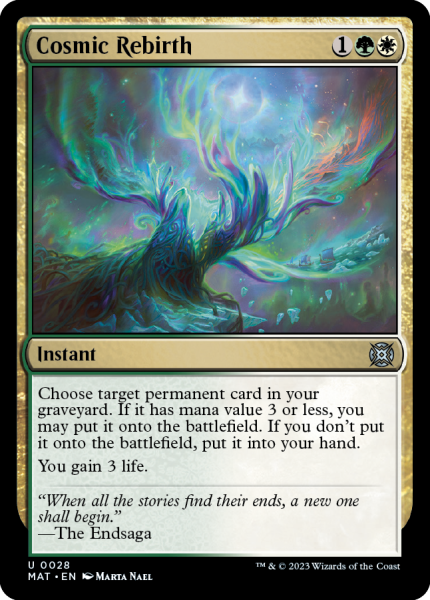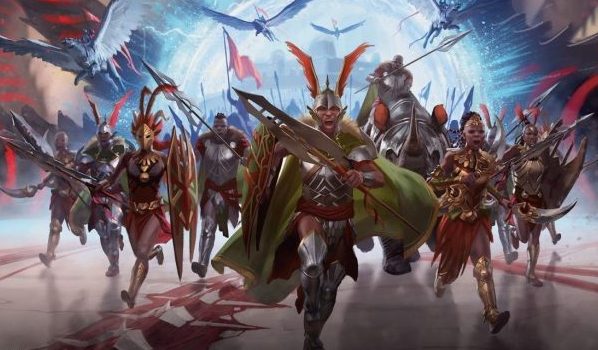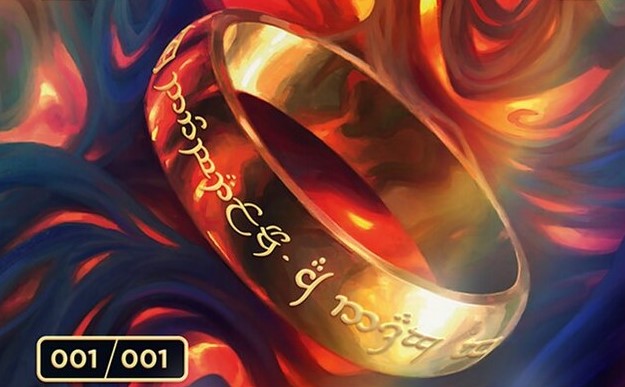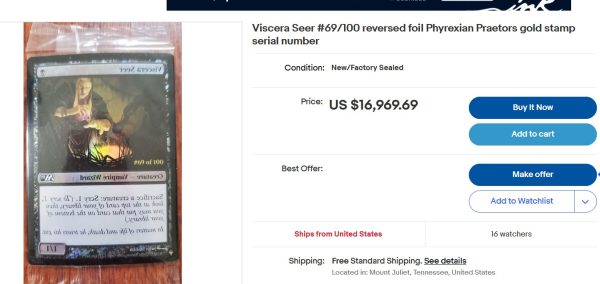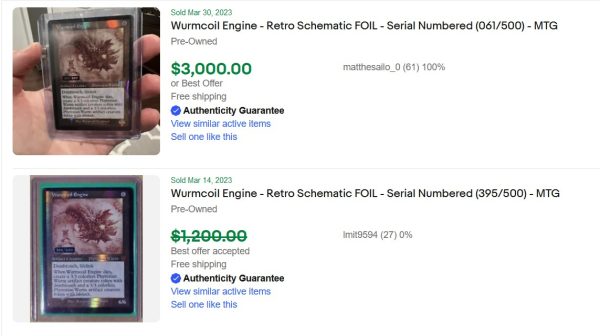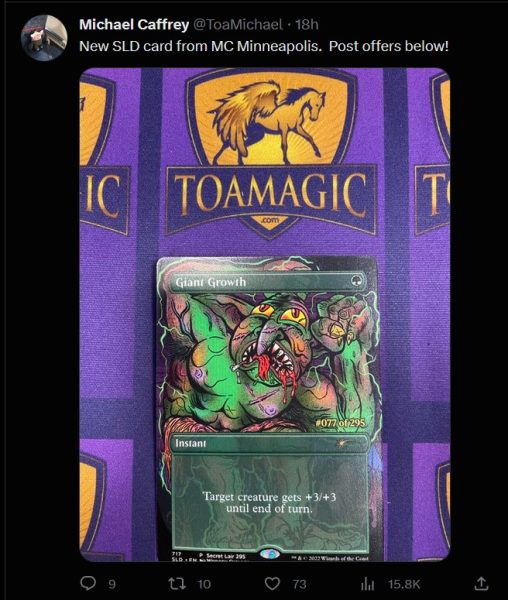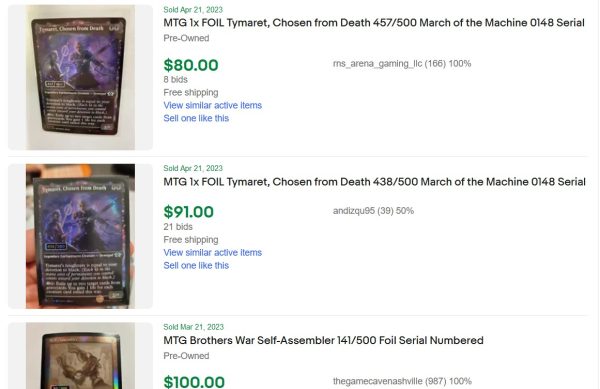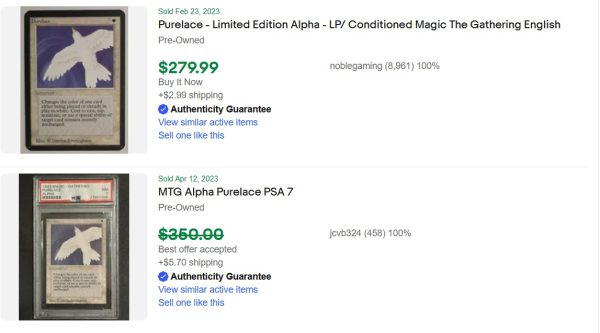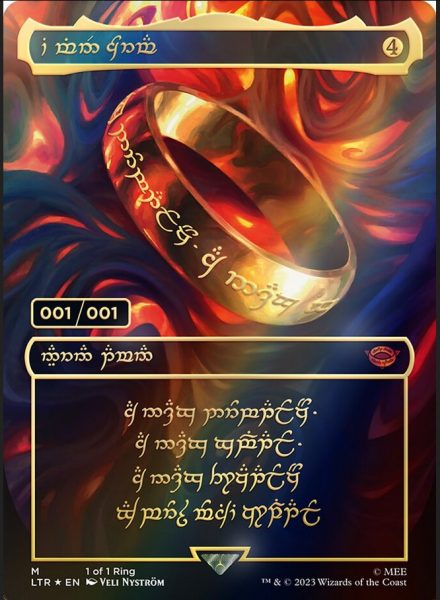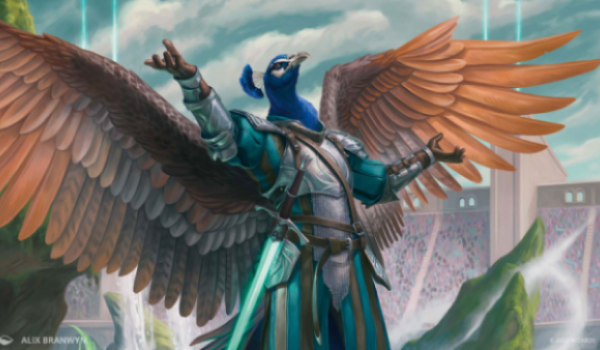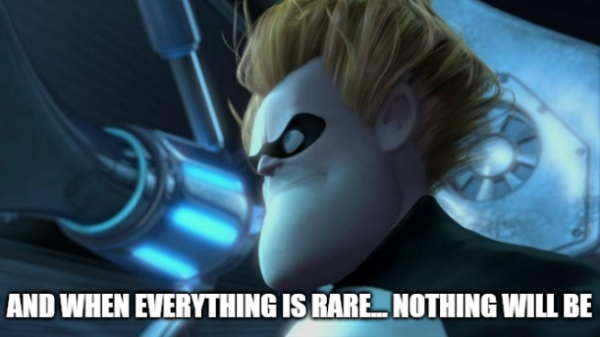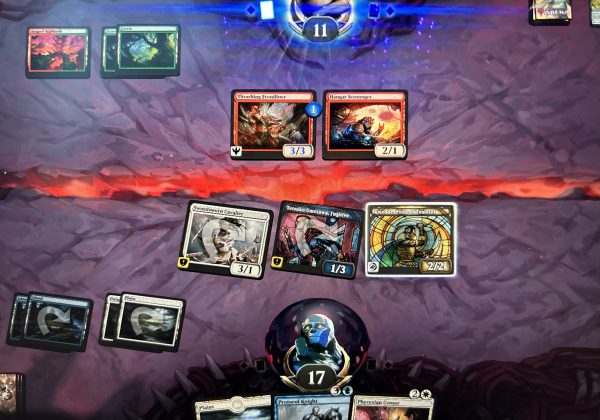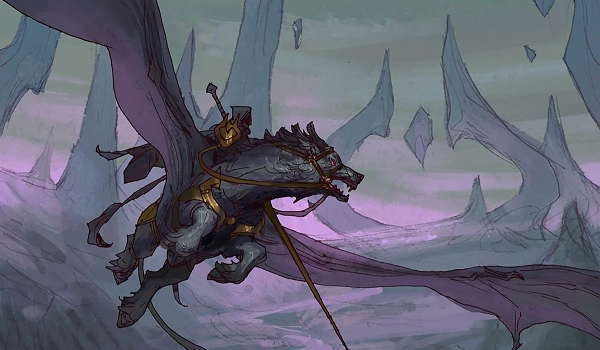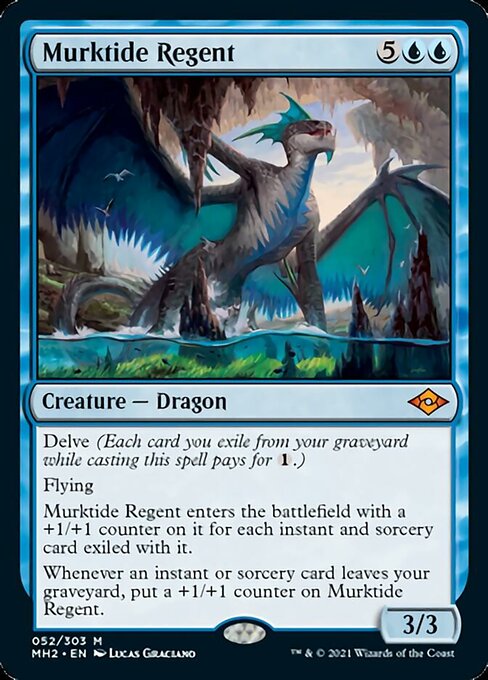Are you a Quiet Speculation member?
If not, now is a perfect time to join up! Our powerful tools, breaking-news analysis, and exclusive Discord channel will make sure you stay up to date and ahead of the curve.
March of the Machine (MOM) will be remembered for its bombs. We've talked about it as a Prince Format for the last few weeks, and while that definition shouldn't evoke the abominations of decades past, the high quantity of rares make it hard to label it anything but.
That said, this is a format where synergies still thrive. Early on, we labeled UW Knights as the most supported archetype. It probably still is. However, UW Convoke, hereafter lovingly referred to as Hopper Aggro, is another great way to approach the format when we're not seeing a stream of broken rares.
I first discovered the deck watching Twitch Streamer and Pro Tour Competitor The Ham pilot it to success. Having long considered the namesake card Halo Hopper unplayable, I needed to know more. To say this card goes late is an understatement. With an ALSA of 8.78, 17Lands has it a mere eight spots from the last picked card in the entire format. If we want the frog, it's ours. But making the frog hop is another thing all together.
What is Hopper Aggro?
Hopper Aggro is a UW Convoke deck that utilizes an aggressive start to manufacture a big board presence. With combat tricks and tempo plays, it's easy to finish off unexpected opponents. The removal in the format is not well set up to defend against this. The removal spells in the most commonly played colors are great for eliminating the huge bombs that have defined the meta. Good for them. We got Frogs.
Taking turn four off to kill a 3/2 that cost us zero mana after we first resolved a Preening Champion in the same turn is not a winning play. It is, however, one opponents may need to make if they're on the backfoot against this deck.
While this deck doesn't have the highest power level in the format, it provides pressure that many decks are too slow to combat.
One-Drops Wanted
One-drops are essential to this strategy. If we want to play Halo Hopper before turn three, we need a one-drop, and any one drop will get that done. There is, however, a hierarchy to which ones we want.
Tarkir Duneshaper // Burnished Dunestomper and Captive Weird // Compleated Conjurer are by far our best options. When I'm in this deck, there is usually an early Weird that got me on the path. The synergy with Weird is nice because we don't lose damage when we tap it for mana, and when it flips, it offers us a reasonable creature and a card to boot.
The more of these flipping one-drops we have, the better Omen Hawker gets. We don't really want to play any Incubate tokens because they're just too slow. If we get dragged into a midrange configuration, we're likely to get wiped out. We're not against playing a copy or two of Order of the Mirror // Order of the Alabaster Host, and this helps there as well, but ultimately there's a cap on its usefulness.
In my less-successful ventures with this deck, I've been forced to settle on Enduring Bondwarden. It's a necessary evil and a really bad top-deck, but it is a one-drop.
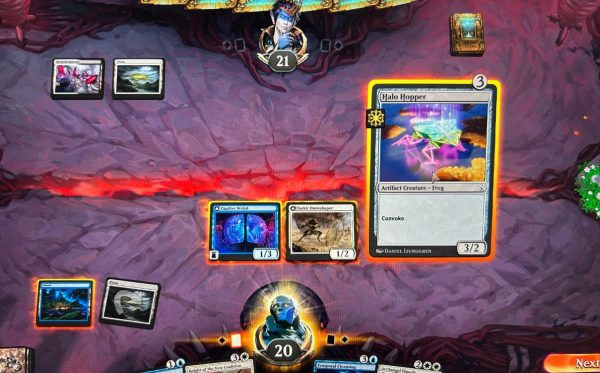
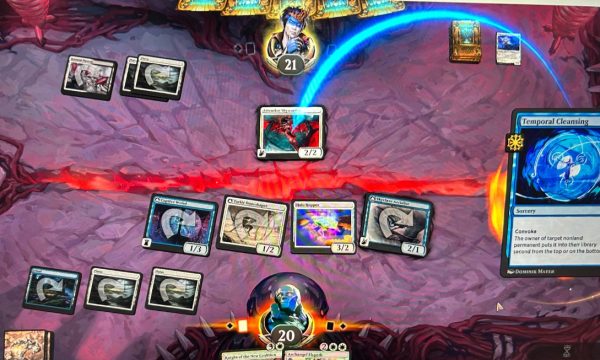
These are the kind of starts that make the deck feel great. We can't do any of this without one-drops.
Of Jetpacks and Flying Rhinos
Aerial Boost is not a card I ranked highly when the set released. It's currently white's top-performing common, and this deck loves a jetpack. Because we're playing such a high creature count in these decks, this card provides reliable burst damage. Occasionally it's the reach we're looking for to close out a game, but sometimes we just draw three and we can jump creatures over for consecutive turns and that's game.
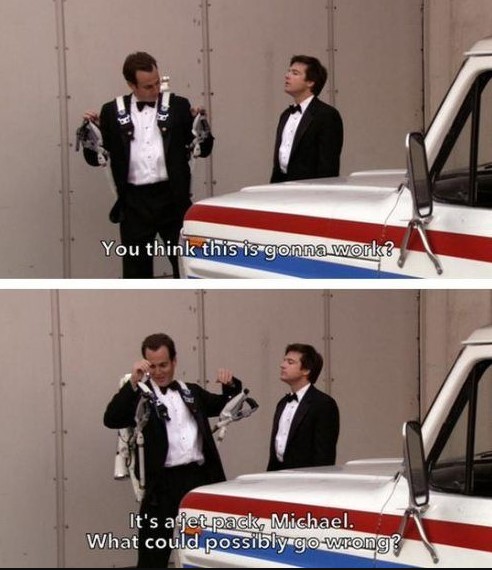
Originally when building this deck, I was leaning on Thunderhead Squadron as a finisher. It's important to remember that this is an aggressive deck, and while we're good at ramping, we don't want a clunky card to eventually close out the game. We want to push damage without losing tempo.
Astral Wingspan is powerful, but probably worse than Aerial Boost. It replaces itself, which is nice, but the five mana is restrictive. I'm probably taking Boost number four or five over the first Wings. This can change if our deck leans slower, but that's probably not a great sign for us.
Four-Warned
The four-drops pack a punch, but we don't want too many. Bola Slinger is a very nice option. Growing a frog into a 4/3 or a Preening Champion into a Phantom Monster while tapping down a creature for an attack, and still knowing we get to disrupt blocks again, next turn, is a good way to finish off opponents if we don't have the top finishers we want.
Putting blockers on skates
Protocol Knight can be even better but needs support. If it's just a 3/4 Frost Lynx it's excellent, but because none of the knights cost one mana, we need to have a good number of two-drops or Preening Champion to help this card perform at its best. Fortunately, a lot of our filler two-drops are likely to be knights just by the nature of the color-pair.
Knight of the New Coalition hasn't lived up to my expectations. A couple of 2/2s just don't matter as we move into the mid-game. However, the vigilance can be nice for convoke, especially if we're heavy on Aerial Boosts. Because the jetpack ignores blockers, it invalidates the ability of the other two options.
Discounted evasion, though, will always have a place in this deck. This card plays in a nice package with Raff, Weatherlight Stalwart and Temporal Cleansing. If we see the deck heading in that direction, we might want to prioritize the Knight, although it's much worse in the more aggressive builds.
My personal favorite four-drop for this deck, however, is not a creature at all.
This card often feels like a nail in the coffin against slower decks. Casting this end step to neutralize blockers usually just means you win. Still, there does need to be a balance between creature count and these types of spells. The heavier we are on Aerial Boost, the less we want Wicked Slumber.
Prioritize Good Cards
Preening Champion is one of the best cards for this deck. It lets us double spell on turn three with the Frog very easily. A couple weeks ago I said I would take Deadly Derision over the Bird. This deck reminded me how powerful convoke can be, and I've audibled back to Preening Champion over every common. Hopper Aggro is one of its best homes.
There are some rares that are excellent in this deck. Archangel Elspeth and Zephyr Singer are two stand outs. We shouldn't eschew great rares because we want to catch frogs. However, once we're in the deck, those are two nice grabs.
Captive Weird // Compleated Conjurer, Artistic Refusal, and Xerex Strobe-Knight are three great uncommons. This is probably the best home for Strobe-Knight, and that's including UW Knights. Skyclave Aerialist // Skyclave Invader is another great option. These are the cards that everyone wants, so we need to fight for them.
After that, we need to make sure we have sufficient one-drops. If we don't have the one-drops, we want to pivot into UW Knights. Again: this deck does not work without one-drops.
We want to wheel Halo Hopper, but the card is valuable. While it often wheels, if it's clearly the best card for you in the pack, then you should take it. The extra pressure it provides is one of the incentives to being aggressive in this format.
Hopper Aggro
Here's the version of the deck I'm currently playing.
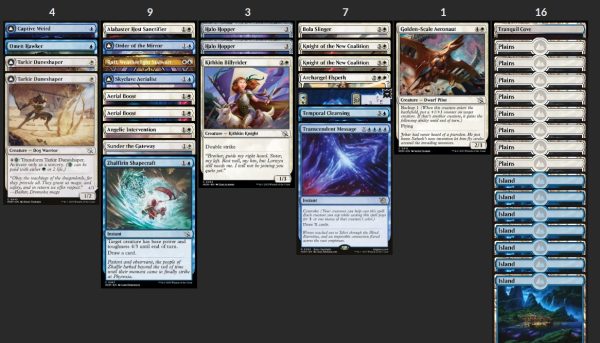
Hopper Aggro (2-1)
This deck has good one-drops, but it's definitely playing a few cards I wish had been left out. The Golden-Scale Aeronaut is pretty mediocre, as is the Kithkin Billyrider. I really wanted another Halo Hopper. I'm going to cut Sunder the Gateway for another land. While this deck can probably afford to cut a 17th land, a below-average spell is just not worth the spot. This is, however, a good representation of what this deck usually looks like for me.
The above build definitely wants a little more interaction, and could stand for a slight uptick in card quality, but it's been blessed with a couple of bombs and should do just fine.
Hopper Aggro vs. Convoke Midrange
My best version of this deck went a little bigger. This version played like more of a midrange deck, and we can definitely leverage our card selection to build the deck this way as well.
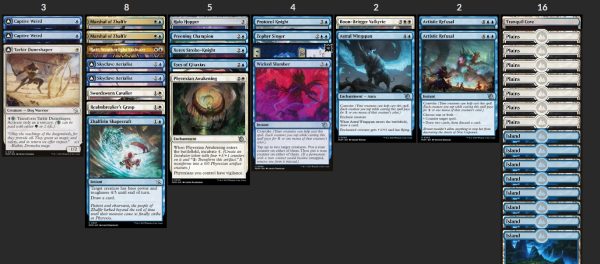
Convoke Midrange (7-0)
This is not really Hopper Aggro, but it operates with a lot of the same principles. It's just not as aggressive. Still, the early game allows us to get a decent Halo Hopper, though we only play one. Our high card quality was accelerated by the same principles that make Hopper Aggro work; we were just settling in for a longer game. Besides, how can you say no to hands like these?
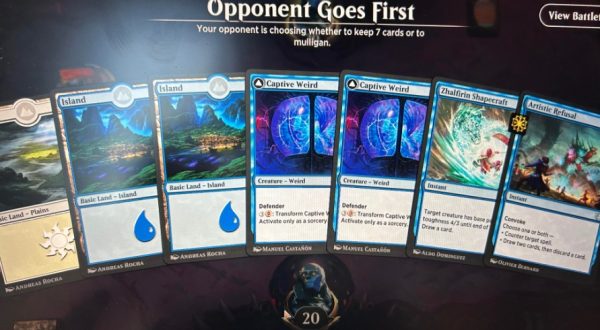
When life give you lemons, make lemonade. And when life gives you a pallet like this, make some weird art. Typically, Hopper Aggro has served as a great place to go when I'm no opening bomb rares. Some of those archetypes are hard to come by.
Credit Where Credit's Due
This deck is a lot of fun and uses some of the format's most overlooked cards. It's very easy to get access to and in my previous articles, I've had a lot of follow up, specifically about this deck. If you want to know more about it, visit TheHamTV on Twitch. Or follow his podcast, The Art of Draft.


